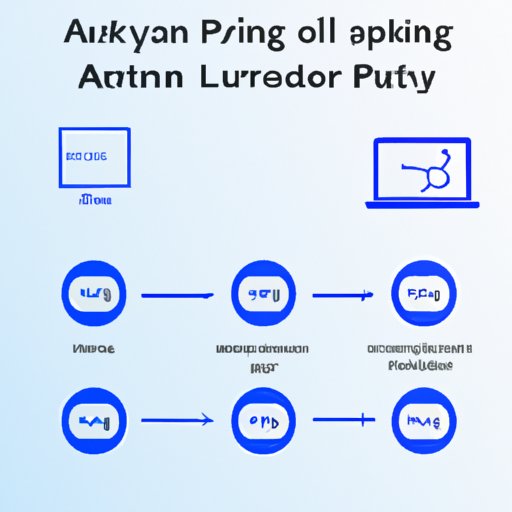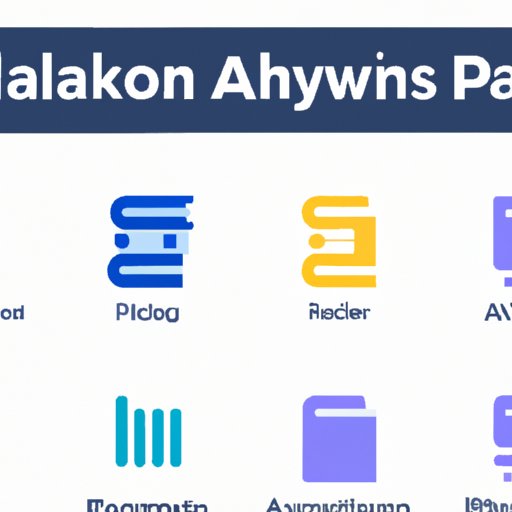Introduction
Artificial Intelligence (AI) is a field of computer science that studies and develops intelligent machines capable of performing tasks that require human intelligence. AI has been gaining popularity over the years, with many applications ranging from image recognition to natural language processing. Python is one of the most popular programming languages for AI due to its easy-to-learn syntax, powerful libraries and packages, and flexibility. This article explores how to program an AI in Python, including the common libraries and packages used, steps involved in building an AI model, different algorithms for AI programming, creating a basic AI program in Python, advanced AI programming examples, and tips and best practices.

Overview of AI Programming in Python
Python is a high-level programming language known for its readability and ease of use. It is often considered the best language for AI programming due to its large collection of libraries and packages. Python is also highly extensible, meaning you can write your own code or use existing libraries and packages to create AI programs. Additionally, Python offers a wide range of tools and frameworks for AI programming, such as TensorFlow, PyTorch, and Scikit-Learn. These tools make it easier to build, train, and deploy AI models.
Benefits of Learning AI with Python
There are several benefits to learning AI with Python. First, Python is easy to learn and use, making it ideal for those who are new to programming. Second, it has a wide range of libraries and packages that you can use to develop AI programs quickly and easily. Third, Python supports both supervised and unsupervised machine learning algorithms, giving you more options when creating AI models. Finally, Python is open source, meaning it’s free to download and use.

Common Libraries and Packages Used for AI Programming with Python
Python has a wide range of libraries and packages that you can use to create AI programs. Some of the most popular libraries and packages include TensorFlow, PyTorch, Scikit-Learn, Keras, OpenCV, and NLTK. Each library and package has its own strengths and weaknesses, so it’s important to choose the right ones for your project. For example, TensorFlow is great for deep learning projects, while Scikit-Learn is better suited for small-scale data analysis.

Overview of How to Install and Use Libraries and Packages
Installing libraries and packages in Python is relatively easy. You can use the pip command to install a library or package, followed by the name of the library or package. For example, if you want to install TensorFlow, you can type “pip install tensorflow” into the command line. After installation, you can import the library or package into your code using the “import” statement. For example, if you want to use the TensorFlow library, you can type “import tensorflow” into the code.

Steps Involved in Building an AI Model
Building an AI model involves several steps. The first step is preparing the data for modeling. This includes cleaning the data, transforming it into a format that can be used by the model, and splitting it into training and test sets. The second step is choosing the right algorithm for your model. Different algorithms have different strengths and weaknesses, so it’s important to choose the one that best suits your project. The third step is training and evaluating your model. This involves running the model on the training set, adjusting the parameters and hyperparameters, and evaluating the model on the test set.
Different Algorithms for AI Programming with Python
There are three main types of algorithms used for AI programming with Python: supervised learning, unsupervised learning, and reinforcement learning. Supervised learning involves providing the model with labeled data and teaching it to recognize patterns. Unsupervised learning involves providing the model with unlabeled data and allowing it to find patterns on its own. Reinforcement learning involves providing rewards and punishments to the model to teach it how to behave in certain situations.
Creating a Basic AI Program in Python
Creating a basic AI program in Python requires several steps. The first step is setting up the AI program. This includes defining the problem, gathering data, and selecting the appropriate libraries and packages. The second step is writing the code for the AI program. This involves designing the algorithm, writing the code for the model, and testing the program. The final step is testing and troubleshooting the AI program. This involves testing the program on different datasets and tweaking the parameters until the model performs optimally.
Examples of Advanced AI Programming Using Python
Advanced AI programming using Python involves more complex tasks. Examples include image recognition, natural language processing, and robotics. Image recognition involves using a computer to identify objects in an image. Natural language processing involves understanding and interpreting natural language, such as spoken and written language. Robotics involves programming robots to perform specific tasks.
Tips and Best Practices for AI Programming in Python
When programming an AI in Python, there are several tips and best practices you should keep in mind. First, take advantage of documentation and tutorials to learn about the libraries and packages you’re using. Second, use pretrained models whenever possible to save time and effort. Third, test your program regularly to ensure it’s working correctly. Finally, keep up with new technologies to stay ahead of the curve.
Conclusion
Programming an AI in Python is a challenging but rewarding task. By following this guide, you can learn how to program an AI in Python, including the common libraries and packages used, steps involved in building an AI model, different algorithms for AI programming, creating a basic AI program in Python, advanced AI programming examples, and tips and best practices. With the right resources and dedication, you can become an expert AI programmer in no time.
(Note: Is this article not meeting your expectations? Do you have knowledge or insights to share? Unlock new opportunities and expand your reach by joining our authors team. Click Registration to join us and share your expertise with our readers.)
